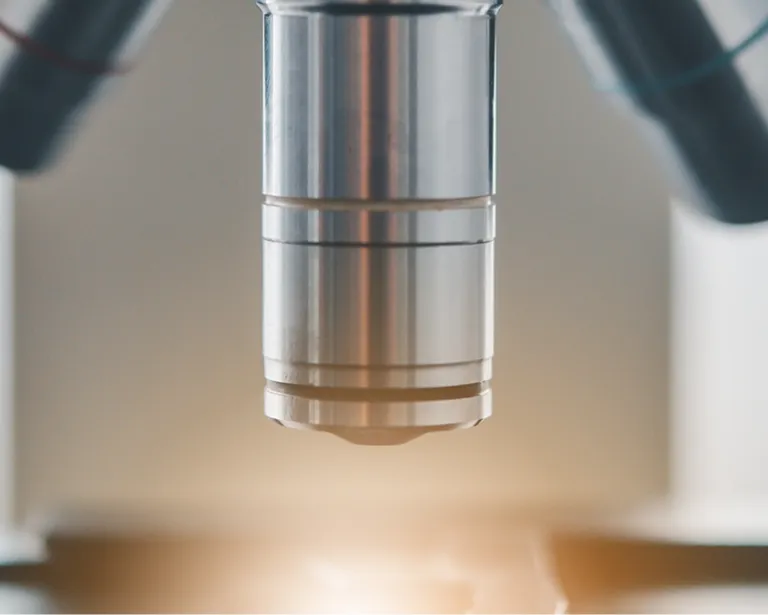
ACTIVITIES
At the Oral Science Center,
the "Section of Oral-Systemic Health" and
the "Section of Oral Devices and Materials" collaborate to
advance research aimed at establishing
more effective dental treatment techniques and
providing innovative oral healthcare.
Section of Oral-Systemic Health
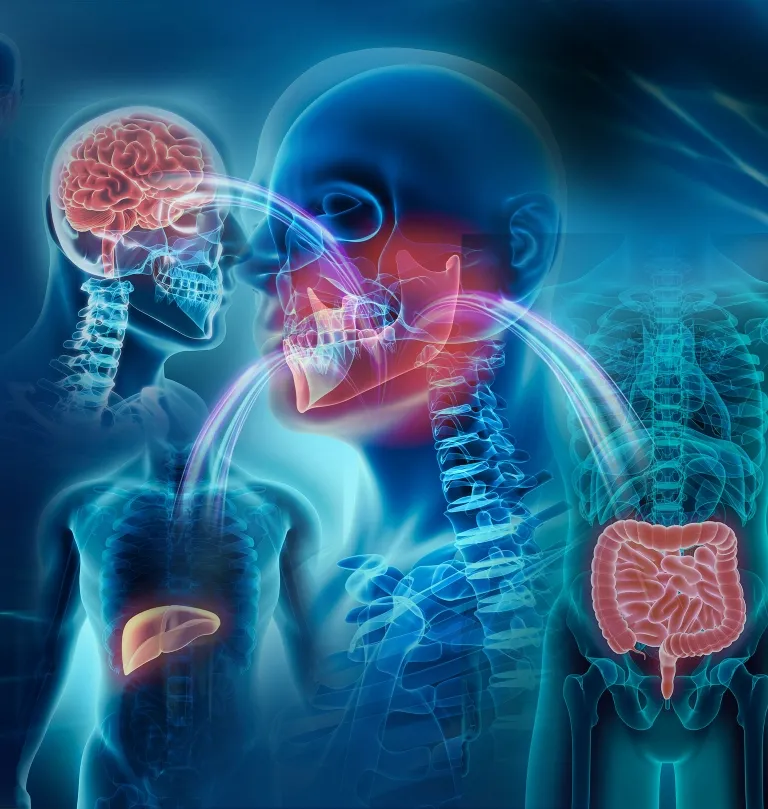
Due to the rapid changes in social structure brought about by declining birth rates and an aging population, the disease structure of oral diseases in our country has significantly evolved. Medical care is shifting from a focus on treating dental issues to a broader approach that involves examining the entire body through the oral cavity.
In the key research area of "Oral Science," we aim to scientifically understand the interconnected system between the oral cavity and the entire body in high-order complex biological systems using a data-driven approach. The goal is to promote preventive healthcare through "oral control" that originates from the oral cavity.
Key Research Area: Oral Science
01
Understanding the Crosstalk Between Oral and
Systemic Health Based on Oral Microbiota
- Elucidating the mechanisms by which periodontal disease-related bacteria induce oral dysbiosis and affect various organs.
- Building evidence that improvements in oral health can lead to the prevention and enhancement of systemic diseases.
Healthy Oral Microbiota
Intricate Balance of
Oral Microbiota
Disruption of
Oral Microbiota Balance
Oral Dysbiosis
Periodontal Disease
Periodontal Disease-Related
Bacteria Inducing Oral Dysbiosis
Disruption of Systemic Homeostasis
Building evidence across all generations on "oral dysbiosis" and "systemic diseases"
Changes in the oral microbiota can occur due to factors such as the host's diet, medication, oral hygiene, inflammation of the oral mucosa, and variations in saliva quantity and quality. This can lead to localized dysbiosis of the oral microbiota, which is believed to impact various systemic diseases.
In this project, we will conduct integrative research combining clinical epidemiology with basic cellular and molecular studies to investigate how dysbiosis of the oral microbiota alters local oral responses and affects systemic organs and diseases. Additionally, we aim to build evidence that evaluating and diagnosing the oral condition and the oral microbiota can predict and prevent systemic diseases, and that improving oral health can contribute to the prevention and management of systemic conditions. Ultimately, we aim to advance proactive healthcare that predicts and prevents systemic conditions through the assessment of oral and overall health.
02
Understanding the Characteristics of the Head and
Neck Microenvironment in Cancer and
Chronic Inflammation and Developing Treatment Methods
- Clarify the unique physiological functions and characteristics of the mucosal tissues in the head and neck region, which is exposed to various external stimuli.
- Investigate the mechanisms underlying the onset and progression of head and neck diseases, including head and neck cancers, to develop new diagnostic and therapeutic methods.
Clarify the unique physiological functions and characteristics of the mucosal tissues in the head and neck region, which is exposed to various external stimuli.
External Stimuli
Mucosal Tissues
in the Head and
Neck Region
Disease Onset Due to
Homeostasis Maintenance and Disruption
-
Immune Response
-
Inflammation
-
Head and Neck Cancer
Refractory Mucosal Diseases
Understanding the Mechanisms of Disease Onset and Progression in Head and Neck Conditions, Including Head and Neck Cancer, to Develop New Diagnostic and Treatment Methods
Development of
Early Diagnostic Methods
-
Saliva Samples, etc
-
DNA Diagnostics
Disease Onset Due to Homeostasis
Maintenance and Disruption
-
Chemotherapy
-
Immunotherapy
-
Radiotherapy
Clarify the unique characteristics of the head and
neck region and aim to develop new diagnostic and
therapeutic methods for refractory diseases,
including head and neck cancer.
The mucosal tissues in the head and neck region have unique physiological functions and are exposed to various external stimuli from daily activities such as breathing and eating, as well as lifestyle habits like smoking.
The mechanisms of head and neck cancer and refractory mucosal diseases are complex. Despite advances in surgery and neoadjuvant therapy, controlling recurrence and metastasis remains challenging. This project aims to clarify the unique characteristics of the head and neck region by identifying key genes and molecules involved in these conditions and understanding the cancer microenvironment. Our goal is to develop minimally invasive treatments for head and neck cancer to improve quality of life and address unmet medical needs.
03
Oral Cavity System: Creating Early Oral Health Care through Integrated Understanding of Brain Connections
- Elucidating the oral cavity system and brain connections across multiple layers: molecular, cellular, network, and behavioral
- Investigating how oral function decline impacts brain and mental functions to contribute to the development of novel prevention and treatment methods
Elucidating the oral cavity system and
brain connections across multiple layers:
molecular, cellular, network, and behavioral
Oral Function
Brain Function
-
Molecule
-
Synapse
-
Cell
-
Network
Investigating how oral function decline
impacts brain and mental functions
to contribute to the development of novel prevention and
treatment methods
Decline in Oral Function
Decline in Brain and Mental Function
We aim to develop preventive and therapeutic methods to improve and maintain oral and brain functions across all generations, making a significant contribution to promoting a society of healthy longevity.
Declines in oral functions such as chewing and swallowing have garnered significant attention from society, as evidenced by the 2018 inclusion of 'Oral Function Development Disorder' in insurance coverage. Additionally, declines in brain functions associated with aging and disabilities, such as dementia, pose major challenges in healthcare within our aging and shrinking population.
"Recent studies have revealed that issues within the oral system, such as tooth loss, reduced chewing ability, and periodontal disease, may be risk factors for declines in brain function. This evidence suggests that viewing brain diseases from the perspective of oral system-brain connections could lead to the development of innovative prevention and treatment methods for such diseases. This project aims to elucidate the neural mechanisms underlying the healthy development and maintenance of the oral system and the impact of oral system dysfunction due to disease and aging on the brain. By improving and maintaining oral functions such as eating and swallowing across all generations, and enhancing the enjoyment of eating and motivation to live, we seek to significantly contribute to the promotion of a society of healthy longevity.
Section of Oral Devices and Materials
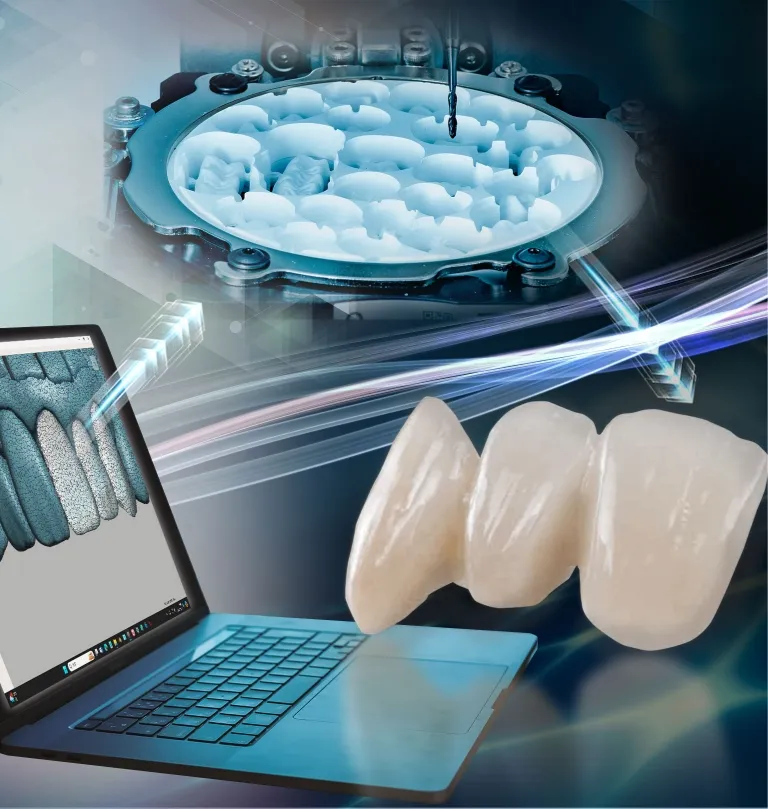
Maintaining healthy eating and drinking is the first step toward quality of life (QOL)and preserving the ability to 'chew and swallow' contributes to extending healthy life expectancy. Declines in these oral functions due to aging are highly likely to be factors in systemic pathological aging, making accurate diagnosis, treatment, and rehabilitation essential.
Our goal is to develop devices to evaluate oral functions and to bring to practical use dental restorative materials that do not rely on precious metals. We are advancing this research with an integrated team that includes researchers from mechanical engineering, materials science, cellular engineering, and data science, working together with a medical and dental team.
Advancing research with an integrated team of
engineering researchers in mechanical, materials,
and cellular engineering, as well as data science,
alongside the medical and dental team.
01
Development of Evaluation and Rehabilitation Methods for Chewing and Swallowing Abilities and Oral Health
- Formulating evaluation metrics for oral functions such as chewing, swallowing, and speaking
- Developing devices to evaluate oral functions
- Creating diagnostic methods that predict oral and systemic diseases from changes in oral function (oral frailty) to prevent diseases before they occur (preemptive care)
- Achieving a society of healthy longevity through the maintenance and recovery of oral functions
Development of devices to evaluate oral functions such as chewing, swallowing, and speaking
Accurate diagnostic devices for oral function decline (oral frailty) using wearable sensors and biosensor technology
Biosensors
Gummy sensors with micro sensors
Wireless, non-contact measurement of chewing movements with food
Real-time quantification and measurement of chewing and crushing functions
Standardized assessment of chewing function
Accumulation of big data
Food products containing fluorescent agents
Measurement of throat (pharyngeal) movement using infrared technology
Detection of food
movement through
the pharynx using only light,
avoiding X-ray exposure or endoscopic
patient burden
Accurate evaluation and quantification of swallowing ability
Accumulation of big data
Wearable sensors, Remote sensors
The Department of Dysphagia Rehabilitation at our university is developing wearable sensors for chewing, swallowing, and breathing, in collaboration with Iwate University and others.
A major issue is the lack of standardized methods for rapidly and accurately assessing oral functions such as chewing and swallowing. Current tests require X-ray imaging or endoscopic insertion, which involve significant radiation exposure and patient burden, as well as the use of specialized equipment and high costs, making them unsuitable for routine use. Developing and disseminating accurate and convenient evaluation methods is essential for preventing declines in oral function.
In this project, we aim to develop accurate diagnostic technologies for oral function decline (oral frailty) using advanced measurement techniques such as wearable and remote sensors, with the goal of preventing systemic pathological aging (early detection and suppression of preemptive conditions). Additionally, we seek to contribute to the development of assistive or rehabilitative devices for chewing and swallowing, ultimately aiding in the recovery of overall bodily functions and extending healthy life expectancy.
02
Development of Dental Materials and Devices for Digital Dentistry
- Establish dental treatment technologies that are stable in material properties, precision, and cost, using digital molding manufacturing methods. Aim to create resource-efficient and environmentally friendly technologies (contributing to SDGs).
- Achieve the development of biocompatible prosthetics and regeneration of periodontal tissues through the creation of new biomaterials and regenerative medicine.
Development of Dental Materials and Devices for Digital Dentistry
Design
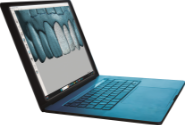
Digital scanning and recording of the shape and condition of teeth and mucous membranes for long-term storage
Remote diagnosis and early diagnosis Utilization of medical big data and individual identification in disaster situations, etc.
Manufacturing
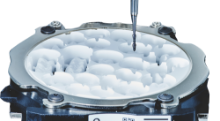
Stability in quality through computer-aided design and AI integration
Reduction in material consumption during intermediate production stages Resource conservation and reduction of environmental impact
Finished products

Expanded material options through digital processing
Transformation of materials in the digital age, characterized by safety, aesthetic appeal, and stable quality and pricing (e.g., ceramics, composite materials)
Traditional dental treatments using precious metals have significant material consumption and environmental impact, and price fluctuations due to social conditions have put pressure on medical costs. Additionally, the manufacturing methods for conventional dental materials and equipment are not compatible with digitalization, making it challenging to adequately respond to the accumulation and utilization of medical big data.
Recent advancements in digital manufacturing techniques not only effectively utilize medical big data but also reduce intermediate material consumption, minimizing environmental impact and conserving resources. However, the speed and precision of these methods, as well as the development of specialized materials, are still evolving. This research aims to develop new dental materials compatible with digital manufacturing, ensuring stable performance and cost. The goal is to establish resource-efficient dental technologies that contribute to SDGs and reduce dental healthcare costs.